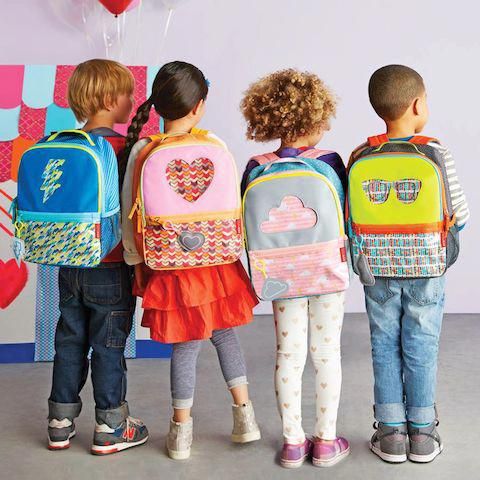I still remember the morning I opened my preschooler backpack and found a half-smashed banana, three glue sticks, and a mysterious puddle of orange paint. Cue the internal sigh and the impulse to toss the whole thing. Instead, I treated it like a small maintenance project (the same way I patch a stubborn bug in code at work): inspect, isolate, fix, and add a preventive test so it doesn’t happen again. Nearly a year later that same preschooler bag is going strong no rancid smells, no wobbly straps and I’ve learned a few practical tricks I want to pass on.
If you’re juggling carpools, snack schedules, and preschool activities, keeping a backpack in good shape feels like one more thing on the list. The good news: a little routine and a few quick repairs make your preschooler backpack last, save money, and model responsibility for your child an unexpected win for early childhood development and social emotional learning.
Why maintenance matters (for parents and little learners)
A well-kept preschooler backpack does more than look tidy. For early childhood education and early learning, predictable routines like packing and caring for belongings become mini-lessons in responsibility. When a pre schooler helps choose what goes in their bag, or learns to zip it up properly, they practice fine motor skills and gain confidence. That sense of independence ties directly into early childhood and development goals: teaching for preschoolers isn’t only about reading or counting, it’s often about small life skills that support play and learning.
Quick daily checklist (2–3 minutes)
Do this each evening and you’ll avoid most deep-clean crises:
- Empty every pocket and shake out crumbs and loose bits.
- Wipe down surfaces with a damp cloth especially the top where paint, yogurt, or glue tends to collect.
- Check for wet items (art smocks, paint-splattered napkins) and remove them immediately.
- Zip open vents and shake water bottles; keep the bottle separate if it leaks.
- Put the backpack in a designated spot to dry if it’s damp air circulation prevents mildew.
This 2–3 minute routine is like daily standups in IT: a quick check prevents bigger fires.
Spot-cleaning: fast fixes that actually work
For spills and stains that happen during preschool activities:
- Fresh spills: Blot gently with a clean cloth don’t rub. That pushes the stain deeper.
- Glue & dried paint: Use a soft toothbrush and warm soapy water to scrub gently. For stubborn spots, a small dab of dish soap left for a minute helps loosen residue.
- Grease or marker: Rubbing alcohol on a cotton ball (test a hidden area first) can lift ink. For grease, sprinkle a little cornstarch, let it sit, then brush off before washing.
Avoid bleach and harsh chemicals these can weaken fabric and fade prints kids love.
Deep clean: how often and how to do it
Plan a deep clean every 6–8 weeks, or immediately after a particularly messy week of preschool activities for preschoolers.
- Empty and pre-treat stains (as above).
- Check the care label. Many preschooler backpacks are machine-washable; if so, put them inside a pillowcase or laundry bag to protect straps and zippers.
- Use a gentle cycle, cold water, and mild detergent.
- Air dry only hang by the handle in a well-ventilated spot. Avoid the dryer (it can warp padding and shrink fabric).
If your preschooler bag isn’t machine-safe, hand-wash in warm soapy water, rinse thoroughly, and stuff with a towel to help retain shape while air-drying.
Zips, straps, and small repairs (don’t ignore them)
Little problems become big ones if left: a zipper that snags, a strap that starts to fray, or a seam coming undone. Fix early.
- Lubricate stubborn zippers with a bar of soap or a graphite pencil rubbed along the teeth.
- Reinforce tiny seam tears with quick hand-stitching or an iron-on patch.
- Replace loose strap clips or use a safety pin as a temporary fix until you can swap in a new buckle.
- Keep a tiny repair kit at home: needle, thread, fabric glue, and a few patches.
This mirrors the idea of patching code: small fixes now avoid a full replacement later.
Organizing the inside: make it functional for learning
A well-organized preschooler backpack supports early education and the learning experience at school.
- Use small pouches for art supplies and snacks so spills are contained.
- Label everything especially water bottles and lunch boxes—to avoid mix-ups.
- Pack a mini “emergency kit” (spare socks, a wet wipe, a small dry snack) for busy mornings or long days.
- Rotate items based on the age at preschool: younger kids need more spares and bulkier clothes; older preschoolers might only need a folder and a snack.
Organization reduces stress for both parent and child and turns packing into a teachable moment great for social emotional learning as kids learn responsibility.
Make maintenance a teaching moment
Instead of being the one who always does the bag work, involve your child. Teaching for preschoolers can include simple routines: show them how to unzip a pocket, how to empty crumbs into the trash, or where to hang the backpack at home. These small actions are part of early childhood development and build autonomy. Role-play: turn cleanup into a game after a preschool activity “mission: clean the backpack”and you’ll see resistance turn into pride.
Storage between terms and when the bag’s not in use
If you swap out seasonal backpacks, clean before storing. Empty pockets, air-dry fully, and store in a breathable bag or on a shelf avoid cramped attics or humid basements. A sachet of lavender keeps smells away; silica packets help against moisture.
Picking a backpack that’s easy to maintain
When you’re shopping, look for:
- Simple interiors (fewer hidden pockets that trap crumbs).
- Removable liners or washable materials.
- Reinforced straps and good zippers.
- Materials that tolerate spot-cleaning and occasional machine washing.
Choosing the right bag at the start reduces maintenance headaches later—and aligns with early childhood and development needs like fit and comfort.
A note for future IT parents (or anyone exploring IT careers)
If you’re exploring a career in IT like I was you’ll notice a surprising overlap between backpack care and software maintenance: preventive upkeep, small iterative fixes, documentation (yes, a checklist), and automation where possible. Teaching little ones to care for their belongings is a low-stakes way to build daily habits that will scale both at home and in a professional life that values organization and reliability. Consider the backpack routine as a tiny daily process you can own and optimize skills that matter in tech and parenting alike.
Final thoughts: small routines, big returns
A preschooler backpack doesn’t need to be pristine to be loved just useful and cared for. A five-minute nightly check, a stain-fighting trick, and a readiness to do tiny repairs will keep your child’s bag functional and fresh all year. Most importantly, involve your child: handing them a cloth or a small job turns maintenance into learning. That’s the real payoff clean gear, less stress, and a child who’s a little more independent.















